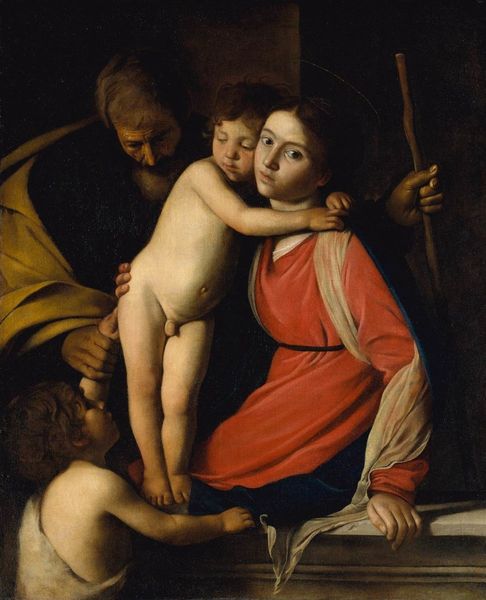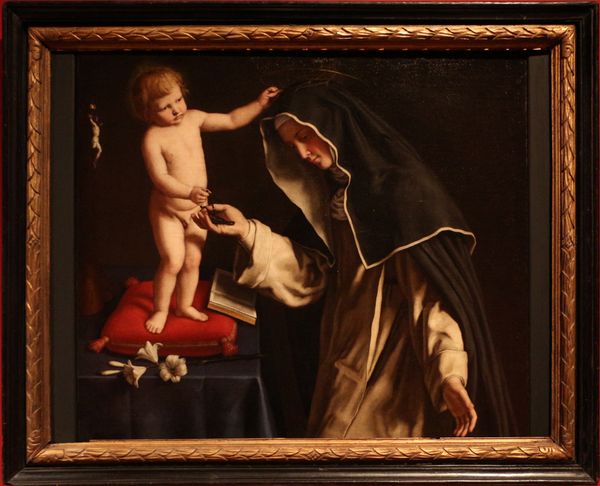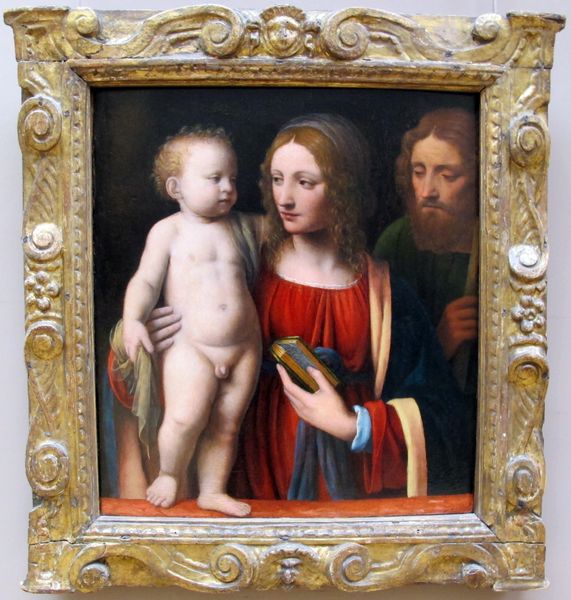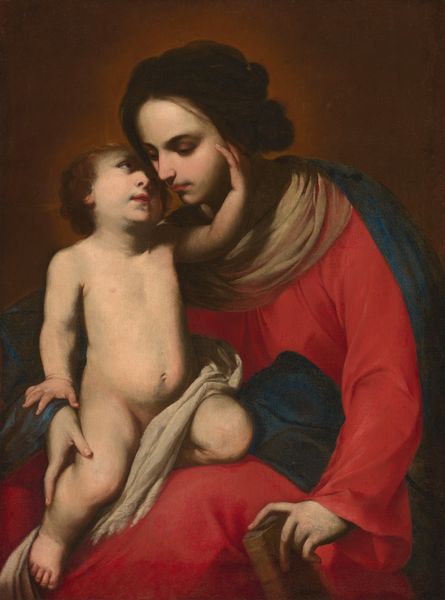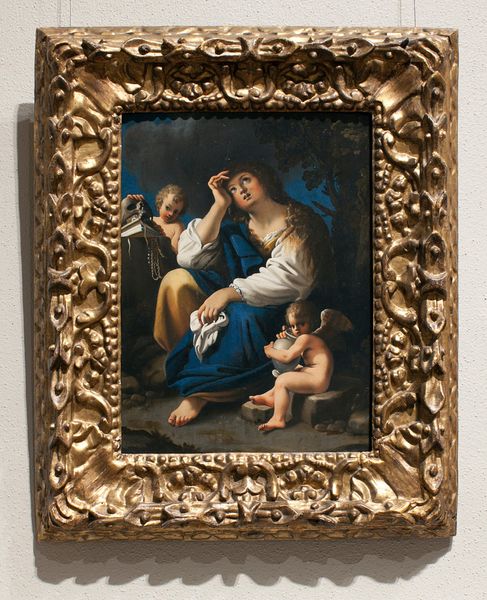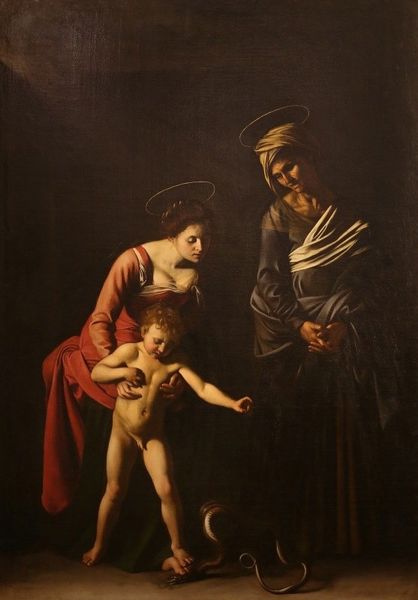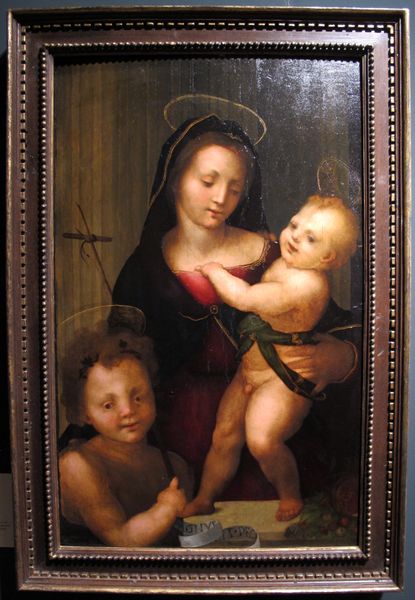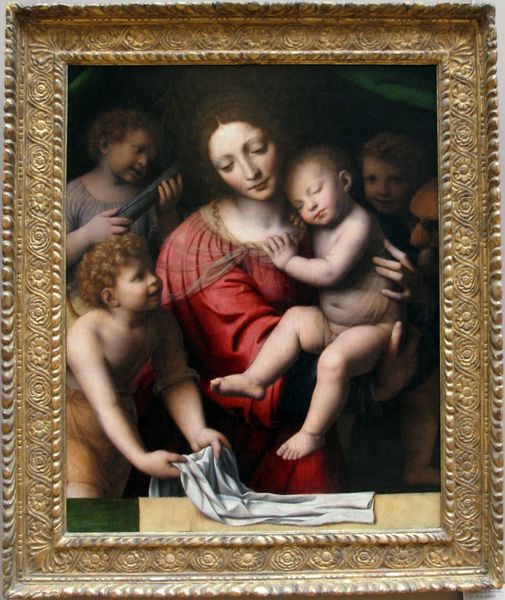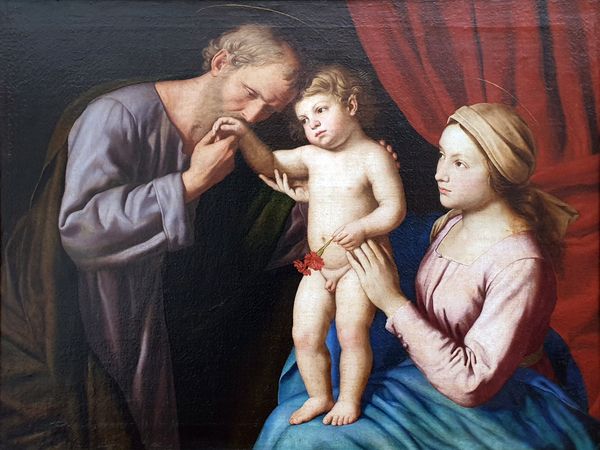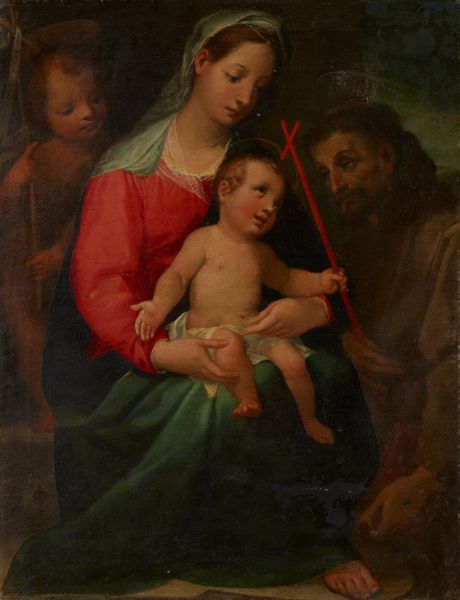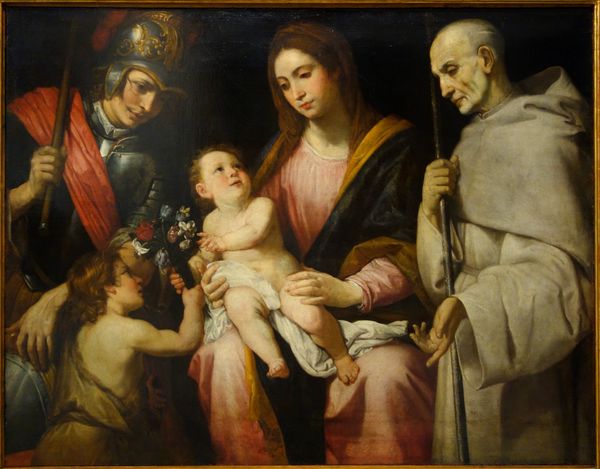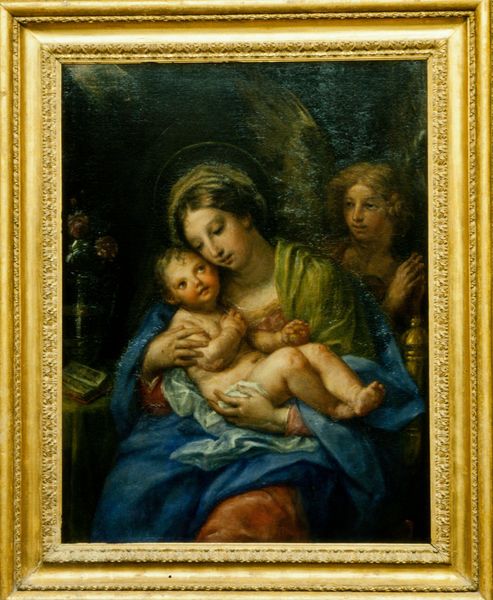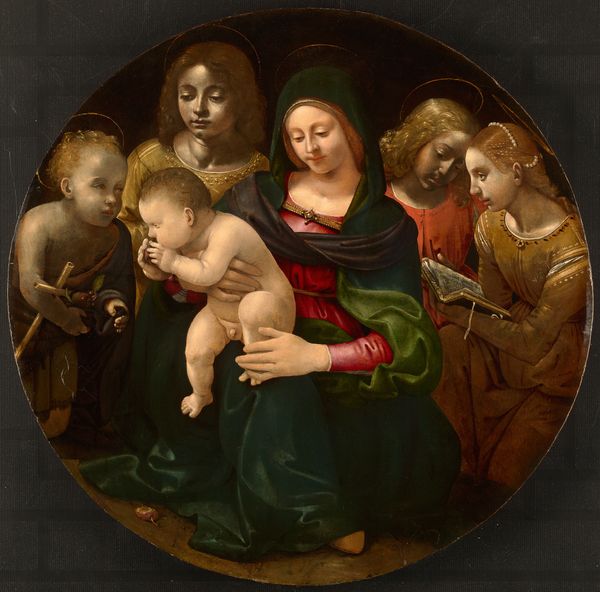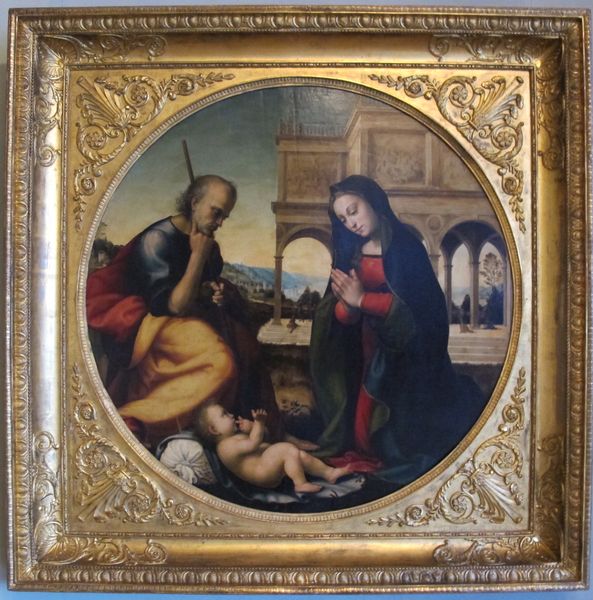
painting, oil-paint
#
portrait
#
baroque
#
painting
#
oil-paint
#
figuration
#
chiaroscuro
#
history-painting
#
italian-renaissance
Copyright: Public domain
Curator: What strikes me immediately is the vulnerability depicted here; the softness of the figures against the dark background. Editor: That's a perceptive observation. We're looking at "Sacra famiglia con San Giovannino," or "The Holy Family with the Young Saint John," attributed to Juan Bautista Maíno. It is an oil painting showcasing the iconic religious scene rendered with incredible detail. Curator: The way the light falls, highlighting Mary’s apprehensive expression… it's interesting. How does this fit into the larger picture of religious art during this period, historically speaking? Editor: Maíno, working in the late Renaissance and early Baroque period in Spain, was navigating complex social and religious norms. Images of the Holy Family often served as ideological tools, reinforcing traditional family structures and the role of the Church. His chiaroscuro technique lends itself to imbuing a deeper message into a domestic portraiture scene. Curator: Indeed, Mary's direct gaze feels charged, especially when considering the patriarchal context. Is she passively accepting her role, or is there resistance encoded within her posture? Her clasped hands also indicate the artist’s deep-rooted religious intention. Editor: Considering Maíno’s influences—particularly Caravaggio and his radical naturalism—I think there’s room for a more nuanced reading. The painting's stark realism brings the sacred down to earth, suggesting a connection between the divine and the everyday lived experiences of the masses. He was one of the first artists who depicted his sacred character with humanism through a common realism. Curator: So, we're presented with not just an ideal, but also with people dealing with human concerns? The power dynamics are clearly at play, with the infant Jesus being supported by both St. Joseph and St. John. Editor: Precisely. By showcasing familiar aspects like maternal affection, the dynamics within working families, and the intimacy, Maíno made the story far more relatable to ordinary people of his time. These images were more than just symbols; they resonated deeply with those experiencing parallel situations. Curator: That certainly adds new dimension to its historical function and allows a new generation of art appreciators to understand the social implications. It asks viewers to acknowledge and reconcile these contrasts. Editor: Exactly. Understanding how these images were designed to be received reveals so much about power structures and shared understandings during the Spanish Baroque period. Thank you for taking a moment to consider what could seem at first as "just" a history painting!
Comments
No comments
Be the first to comment and join the conversation on the ultimate creative platform.
